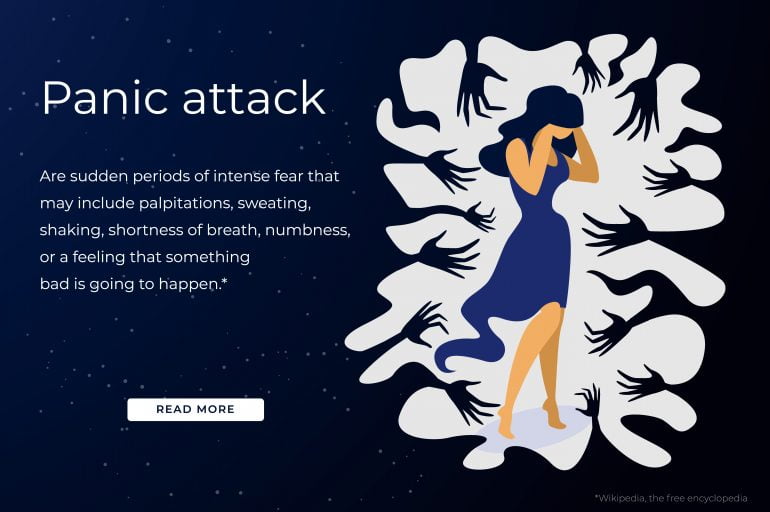As the shelter in place act extends for the Bay Area, an increase in panic has been a common theme for clients at Good Therapy SF. This is understandable as limited social contact, reduced opportunities to be active, and as an unknown future are the perfect ingredients to create anxiety.
To treat panic attacks, there are specific behavioral approaches that work.
First understanding the physiology of hyperventilation, then using breathing techniques and/or intense exercise can stop panic attacks.

TLDR: the quick breathing that accompanies anxiety causes the pH of the blood to increase, creating a feeling of not getting enough oxygen. The natural response to breath faster only makes this worse.
In normal breathing air goes into lungs and oxygen is transferred to the blood, which then carries oxygen to tissues. Carbon dioxide is excreted as a byproduct of this process and exhaled.
During an emergency, our breathing rate and pattern change. Instead of breathing slowly and gently from our lower lungs, we begin to breathe rapidly and shallowly from our upper lungs.
This shift not only increases the amount of oxygen into our bloodstream but it quickly “blows off” an increasing amount of carbon dioxide. In a physical emergency we are producing excess carbon dioxide, so this breathing rate is essential.
However, when we are not physically exerting ourselves, it produces the phenomenon called hyperventilation by discharging too much carbon dioxide.
This lowered level of carbon dioxide causes the pH of the blood to increase, leading to alkalosis.
Alkalosis interferes with the ability of oxygen to bind to blood cells (The Bohr effect). The result can be a feeling of not getting enough oxygen. This can make a person breathe faster in order to make up for the lack of oxygen. However, this just makes the situation worse.
In addition, the initial cardiovascular response to hyperventilation is a reduction in blood pressure, including a drop in cerebral blood pressure, with an increase in heart rate and cardiac output.
Diaphragmatic Breathing
Inhale through the nose for 4 seconds, hold for 4 seconds, exhale for 4 seconds. Repeat until the hyperventilation has stopped. This usually takes 2 – 10 minutes.
If there is one skill to focus on exclusively, this is it. With practice, it is easily the best way to stop hyperventilation. Sometimes it helps to place one hand on the stomach and one hand on the chest. This emphasizes the goal of filling the lungs (hand on chest) and exhaling evenly (hand on stomach).
This deep breathing approach engages the diaphragm, hence the name.
Holding your Breath
This is a “break in case of emergency” approach. Hold your breath a few times in a row for 10-15 seconds. Repeat the process until the hyperventilation decreases.
If it feels too difficult to use diaphragmatic breathing in the moment, temporarily hold your breath. This works because it prevents the expelling of carbon dioxide.
Breathe In and Out of a Paper Bag
The carbon dioxide in the bag is breathed back in, increasing the ratio of carbon dioxide to oxygen. Yes, this actually works.
Intense exercise in the moment can help. When we exercise, the muscles require more oxygen, and this produces more carbon dioxide. This works by reducing the pH balance of the blood and puts things back at normal levels.
Assuming clients do not have medical issues, we suggest movements that involve many muscle groups at once to help simulate this effect. This could include push ups, body squats, or up-downs / burpees.
Many clients are experiencing anxiety during this difficult time. While panic attacks can happen for a number of reasons, the quickest way to stop them is to focus on reducing hyperventilation. By using specific breathing techniques and/or intense exercise it is very possible to stop hyperventilating. As is common with most skills, practice is important. The more familiar you are with the skills, the easier they can be applied.
For help with panic attacks and other anxiety issues, feel free to reach out to Good Therapy SF.
*Credit for much of this information goes to Dr. Eric Ryan, Ph.D., a former supervisor who created a treatment manual I reference regularly.